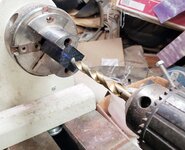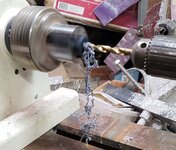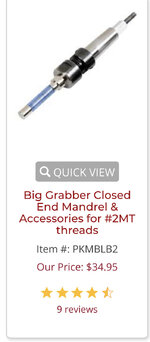bookboy22
Member
I have a Nova II Comet lathe. I have been turning pens for a while but have gotten a few unique requests to create a unique pen. One that is drilled on one end only. Think of it as a pool cue or drum stick. I have built a couple of these the best way I know how to, and they have come out good, however, the only way I have done so is by using a chuck that clamps around the piece. I clamp the wood piece in, turn it do the desired diameter. When I am done with that, then I remove it form the lathe, cut off the end that I had in the chuck. My dilemma is how do I now round off the end and complete the sanding and finish? I was wrapping the end and putting that in the chuck, but it just ends up marring up the wood anyhow. Plus, I can't finish the entire thing in one setting either. No matter what I try, the piece ends up with gouges and off the lathe, I can't seem to get a good finish to it.
Am I using the incorrect jaws or chuck for this, is there any alternate ways of doing this? I was thinking I could drill the other end, then once I am done plug the end I don't want to have a hole. But that would end up leaving a filled in hole! Not what my desire was there. Thanks for any ideas.
Am I using the incorrect jaws or chuck for this, is there any alternate ways of doing this? I was thinking I could drill the other end, then once I am done plug the end I don't want to have a hole. But that would end up leaving a filled in hole! Not what my desire was there. Thanks for any ideas.




